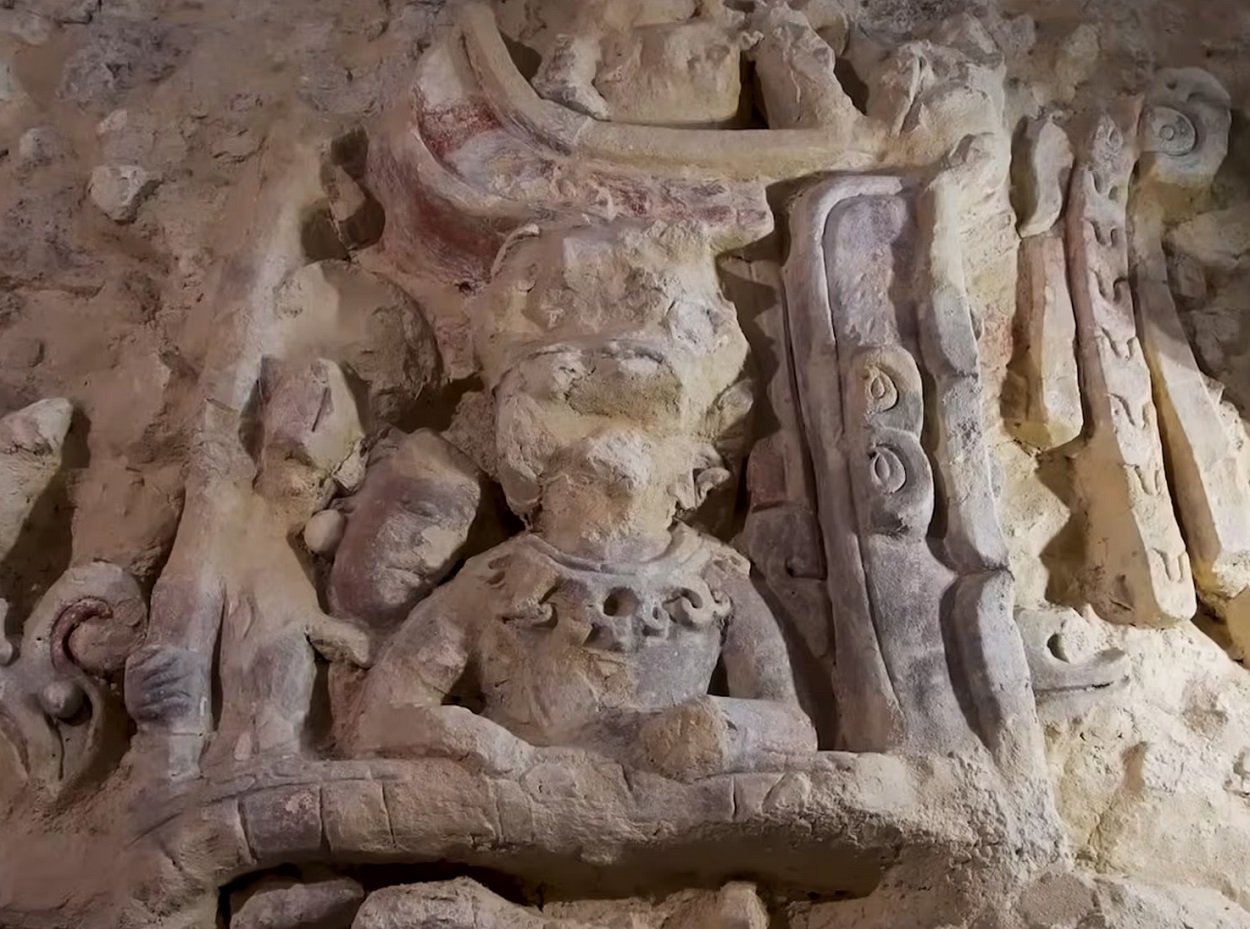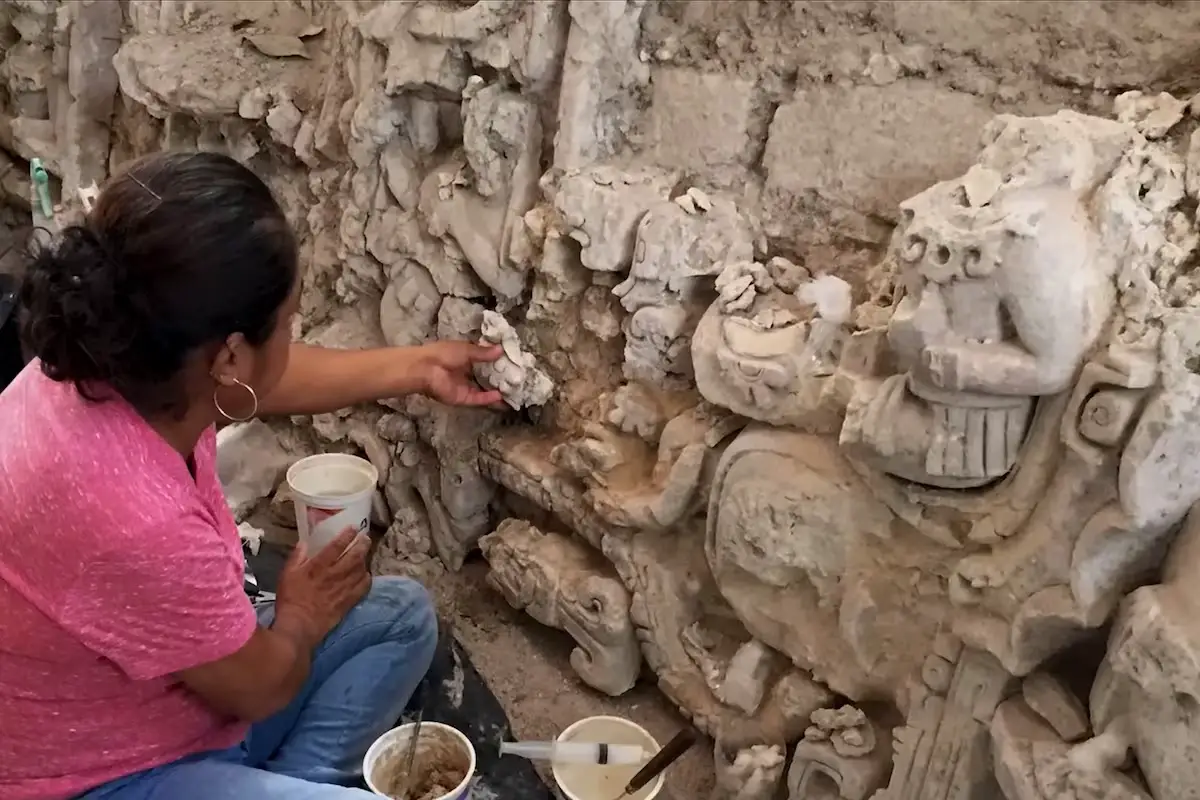Archaeologists from the National Institute of Anthropology and History (INAH) have unearthed three Maya murals at Dzibanché, located in southern Quintana Roo, in the Yucatán Peninsula of southeastern Mexico.
Dzibanche (meaning “writing on wood” in the Mayan language) was founded around 300 BC during the early Classic period.
Dzibanché served as the capital of the Kaan dynasty, a powerful Maya lineage that conquered and controlled vast areas of the central Maya lowlands during the Mesoamerican Classic period.
The city is characterised by its Peten-style of architecture, with key structures consisting of the Temple of the Captives, the Temple of the Lintels, and the Temple of the Owl. The largest structure is the Cormoranes Pyramid, built during the 5th century AD using the Teotihuacan-influenced talud-tablero style of Maya architecture.
Archaeologists from INAH recently conducted excavations in the Dzibanché archaeological zone as part of the “Program for the Improvement of Archaeological Zones (Promeza)”, connected to the Mayan Train project.

Excavations unearthed two platforms west of a ballcourt, where the archaeologists found ornately decorated murals that depict scenes of the Kaan dynasty rulers.
Maya ballcourts served as venues for athletic and religious events, symbolising regeneration and the continuity of Maya existence. The Maya expressed devotion to their gods through the Maya Ballgame—a variant of the Mesoamerican Ballgame—and through ritual sacrifices.
The first mural shows two figures guarding a pedestal that once supported a statue, alongside symbols referencing the Kaan rulers. The second depicts figures against a backdrop of the night sky, with stars, serpents, and motifs common in Mayan and Teotihuacan art forms.
The third mural has scenes of mythological creatures and animals associated with the constellations. Intertwined snakes appear as a recurring motif throughout the scenes, symbolising the Kaan rulers of Dzibanché and reinforcing their claim to divine lineage.
Header Image Credit : INAH
Sources : INAH





